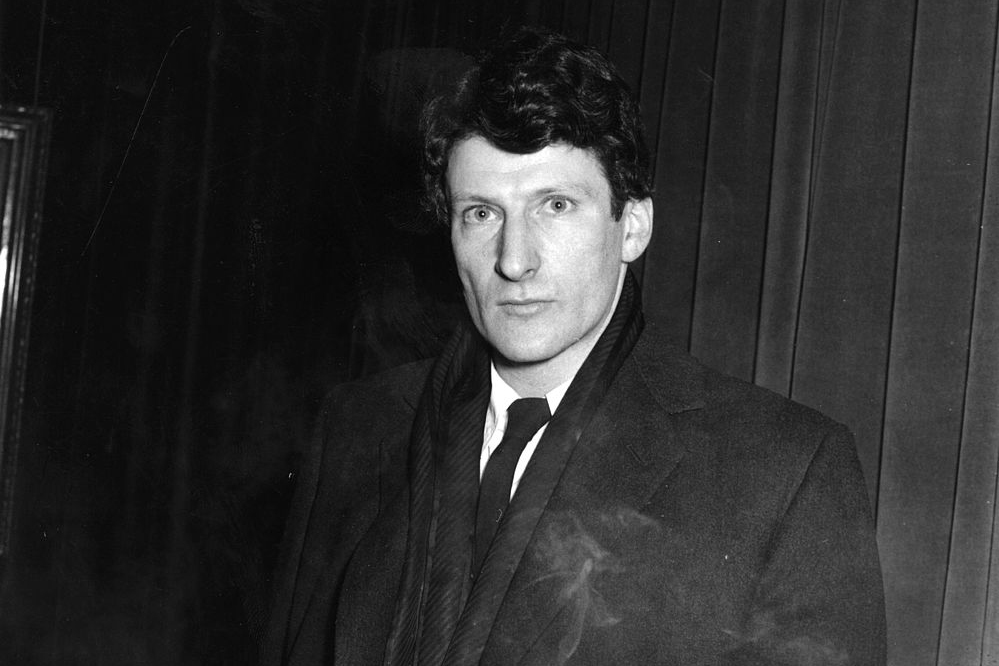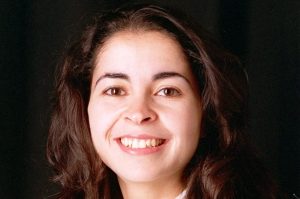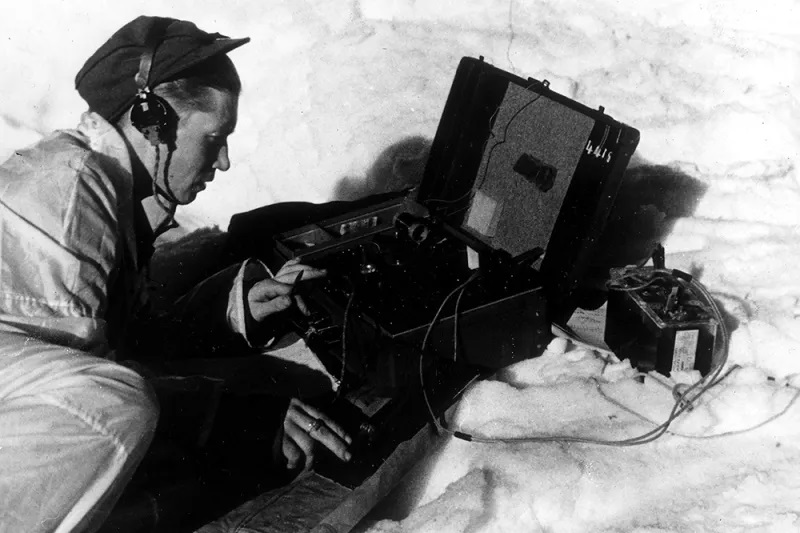This article is in
The Spectator’s November 2019 US edition. Subscribe here.
Amedeo Modigliani thought the muse, painter and memoirist Nina Hamnett had ‘the best tits in Europe’. She fell 40 feet from a window and was impaled on the basement railings.
Not suicide. She was peeing out of the window, the shared lodging-house lavatory being too distant. On her death-bed, her breathing was like a harmonica.
The collector Roland Penrose liked being tied up by a dominatrix, a woman wrestler whom he and his photographer wife, Lee Miller, brought to England and shared. The busy philosopher A. J. Ayer was known as Juan Don. When the painter and model Isabel Rawsthorne finally had sex with the persistent, overweight sculptor Eduardo Paolozzi, she reported that it was ‘exhausting’: she had to do all the work.
W.H. Auden predicted that his last words would be, ‘I’ve never done this before.’ Michael Tree, who married Anne Cavendish, the Duke of Devonshire’s daughter, was a chatterer known as Radio Belgravia — which might be an appropriate sub-title for The Lives of Lucian Freud.
You might think these selected snippets of gossip are, however interesting, peripheral to the life of Lucian Freud. But they tell us something crucial about the first volume of William Feaver’s biography. It is also an autobiography, written up from tapes and notes from daily telephone conversations with Feaver’s subject. Freud, who had a reputation for discretion and was litigious if his privacy was encroached on, was an unstoppable gossip.
‘How old am I now?’ he would ask. And that is a chronological question the reader is also liable to ask in the spate of nonstop disclosure. As a biographical method, the rewards are obvious. Who but a prig doesn’t want to know that Francis Bacon once semi-publicly fellated an unconscious, superbly endowed workman in a side room of the Soho artist’s club the Colony Room? The drawbacks are repetition, obscure chronology, tangled confusion in the telling — often quoted directly — and lack of explanatory annotation. On one hand, firsthand, hand-held authenticity. On the other, a slight uncertainty and sometimes a yen for something more sober, something clearer.
For example, Freud had a long (by his standards) and fairly open affair with Belinda ‘Bindy’ Lambton. He painted her four times. Her husband, the disgraced peer Lord Lambton, bought all four paintings for £1,000, including ‘Portrait Fragment’. Surely the reader needs to know that ‘Portrait Fragment’ is a full frontal depiction of Lady Lambton’s vulva — impressive, complicated, in Matthew Arnold’s famous phrase the ‘object as in itself it really is’.
Lower down the social scale, readers might find it helpful to be told that twice-mentioned painter Vic Willing was the husband of painter Paula Rego. Equally, after a two-page résumé of slum landlord Peter Rachman, we don’t need the epithet ‘slum landlord’ 20 pages on.
The copy editor should also have cut repetitions of Lincoln Kirstein’s unhelpful, disparaging remarks about ‘Woman with Carnation’, a painting he owned. We are twice told, 30 pages apart, that Francis Bacon’s wedding present to Freud and Lady Caroline Blackwood was his painting of a pope between two sides of beef (based on John Deakin’s photograph of himself between two coarse keyboards of ribs).
This volume covers Freud’s childhood, awkward adolescence, enlistment in the Merchant Navy and a voyage to New York on the SS Baltrover, a long sojourn in Greece on the island of Poros, two failed marriages (first to Kitty Epstein, daughter of sculptor Joseph Epstein, then to the heiress Lady Blackwood) and numerous affairs and their progeny. Freud comments on simultaneous children by different women: ‘You ask me why are these children all the same age? Don’t you realize I had a bicycle?’ (His lover Anne Dunn had ‘three or four abortions’.)
Freud straddled high and low society. He lived in lowly Paddington, in Delamere Terrace, but we glimpse him explaining his tartan trousers to Princess Margaret: ‘An old Portuguese tartan, ma’am.’ (They were Royal Stewart, the personal tartan of Margaret’s sister, Elizabeth II.) He takes Garbo on a date. She behaves like a film star in a film: ‘“Let’s stand in the rain.” I was wearing my best suit. Fucking hell.’
Freud lived in a world of sexual Lego. A taster, three typically astonishing sentences:
‘When I started going out with Caroline, Henrietta [Moraes, the model] was very excited; one evening, [the actor] Norman Bowler, [painter] Johnny Minton’s boyfriend, was dancing with Caroline and he said, “Henrietta, I think I’m going to fall in love with you.” Caroline had a fit. Norman Bowler went on to marry Henrietta, who was pregnant by Colin Tennant [Baron Glenconner] at the time. Yet Tennant was reported as being a possible husband for Princess Margaret.’
At one time, Freud seems to have been servicing his student Suzy Boyt, the aristocrat’s daughter Jane Willoughby, the publican’s daughter Bernardine Coverley and June Keeley, who later married the painter Michael Andrews. Suzy Boyt had four children by Freud, including the writers Rose and Susie Boyt. ‘I’d like to thank you for the children’, she told a bemused Freud 40 years on. Bernardine Coverley was the mother of Esther the novelist and Bella the designer.
‘I’ve seen men, boyfriends, driven mad by him using his extraordinary power of picking people up at a party by the side of their boyfriends and taking them to the bathroom,’ Freud’s friend, the painter Frank Auerbach, says of his seduction technique. Auerbach himself was very good looking, but nothing compared to Freud (once Freud had had the shark-like fang removed from between his front teeth, not to mention a supernumerary little toe on his little toe).
As a troubled adolescent, Lucian was briefly, informally analyzed by Dr Willi Hoffer, a follower of Freud’s grandfather Sigmund. Hoffer wondered if Lucian was homosexual, because he was uncircumcised and his father Ernst was circumcised. Freud himself is emphatic. David Carr, heir to a biscuit fortune, ‘reached over and started to undo my trousers. I told him to lay off… “Thanks, awfully, I can undo my own flies,” I said. I was never queer.’
However, others aren’t so certain. Freud’s cousin, the poet Michael Hamburger: ‘He told me about some homosexual experiences he had had in the Merchant Navy.’ There were other rumors: Francis Bacon put it about that Freud went to bed with Auden because he was famous, but found himself unable to perform.
Freud had a long, intense affair with Lorna Wishart, an incredibly beautiful, willful woman 20 years his senior. Lorna gave Freud the notorious zebra head (from Rowland Ward, the taxidermist in Piccadilly). She drove an open-top Bentley until gasoline became unavailable during the war: she ‘put it on grass and birds lived in it’.
The affair began with the couple caught in flagrante by her husband, the communist publisher Ernest Wishart: ‘I was caught by Wish with Lorna. There was an awful scene in a field. She was concerned for me; he shouted and called her a whore, probably because of her being with a much younger boy.’
Freud seems to have been 21 or thereabouts. Their relationship, a real passion, faltered when Freud took up with the actress Pauline Tennant. ‘I thought I’d given you up for Lent but I’ve given you up for good,’ Lorna said. She became a devout Catholic.
The poet Laurie Lee, Lorna’s previous lover, attacked Freud in the street and reported that Lorna Wishart ‘goes to him when I long for her, and finds him in bed with a boyfriend’. The boyfriend, according to Lorna, was Charlie Lumley, a pretty petty criminal from Paddington whom Freud successfully painted several times. Auerbach thinks the gossip about Charlie Lumley had some foundation.
More significantly, in the aftermath of the liaison with Lorna Wishart, Freud bedded her artist son, Michael Wishart. The affair was short-lived because, Michael reported, Freud found it ‘physically painful’. This is confirmed by Anne Dunn, who married Michael Wishart as an act of revenge: ‘Michael himself told me of the affair with Lucian but I think it was of brief duration when they were both staying at the Hôtel d’Isly.’ Homosexuality is the one area where the biographer dissents from his subject.
Freud met the unevenly gifted, influential and faintly poisonous Francis Bacon in late 1944 or early 1945. ‘Is drawing what you do?’ Bacon asked. ‘I wouldn’t want to do that.’ The artist Michael Ayrton said that Bacon couldn’t draw. (He couldn’t; Freud could; but drawing wasn’t fashionable.) Bacon was a master of disparagement: ‘I had a long talk with Henry Moore. I think I really managed to fuck up his work.’
Moore had the backing of the establishment and was the face of British modernism. When Freud became successful, equaling Bacon’s sales prices, Bacon wasn’t ‘interested’ in Freud and the friendship was effectively over. Bacon had his own promotion to do. Here, Freud gets to tell his version of events with similarly patchy panache.
This article is in The Spectator’s November 2019 US edition. Subscribe here.

























